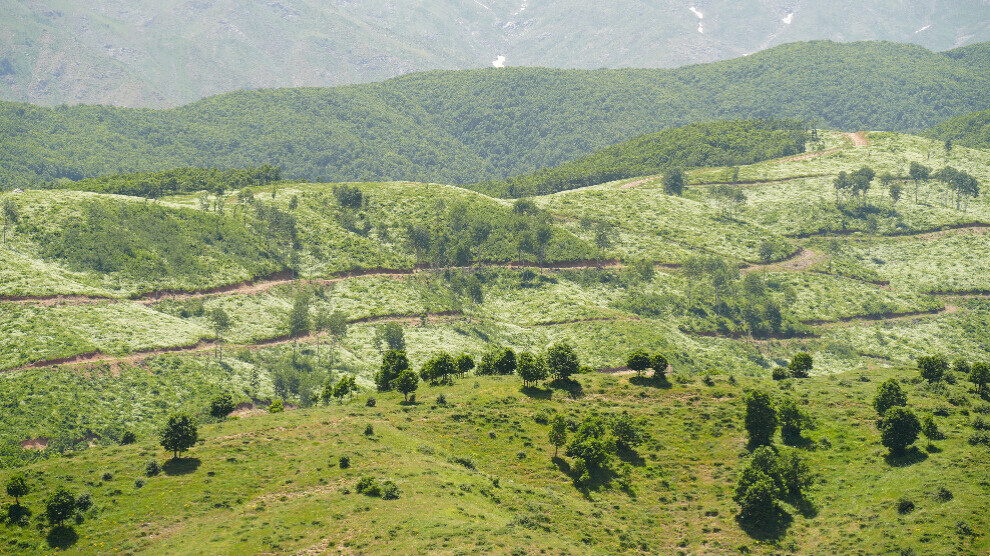Forest regeneration begins in Şêxan after years of tree cutting
The forest in Şêxan is beginning to recover as greenery returns to the area following two years of relentless tree cutting.
The forest in Şêxan is beginning to recover as greenery returns to the area following two years of relentless tree cutting.

In several cities across Kurdistan, ecological destruction continues as tree-cutting operations persist under the pretext of “security.” Şırnak (Şirnex), Bitlis (Bedlîs), and Bingöl (Çewlîg) are among the most affected areas. In addition to security concerns, authorities frequently cite “rejuvenation” as justification, even though trees are often cut from their roots to prevent regrowth.
In Şêxan (Shekhan), where deforestation continued uninterrupted for two years, the cutting was halted this year after villagers raised strong objections. Thousands of young trees were cut down across dozens of hectares, and the foothills of the mountains in the highlands were shaved so severely that the damage was visible from a distance. This year, however, no further cutting took place. Roots that had once been torn up have begun to reemerge, and the foothills, brown and barren last year, have turned green once again in a quiet but determined revival. Villagers condemned the destruction and stated that they will continue to resist deforestation efforts in the region.
Tree cutting continued non-stop for two years
Between 2023 and 2024, a large-scale tree-cutting operation began in the Şêxan region of Muş. The operation targeted areas populated with young trees and continued uninterrupted for two years. During this time, dozens of hectares were destroyed. Nomadic herders and livestock living in the highlands were severely affected by the destruction. The aftermath resembled a scene of plunder. When Serhat Eren, a MP for Amed from the Peoples' Equality and Democracy Party (DEM Party), submitted a parliamentary inquiry on the matter, the official response claimed the cutting was part of a “rejuvenation” effort and had been carried out with ecological balance in mind. The statement also claimed that only old trees were removed. However, visual evidence from the area during the cutting period contradicts the Ministry of Agriculture and Forestry’s claims.
Villagers stopped the cutting
Despite the devastation, the area has begun to turn green again this year with the arrival of warmer weather. Small sprouts have appeared in place of the cut trees, and the land is slowly attempting to regenerate. Villagers we spoke with stated that, following their objections, the cutting was halted and prevented from spreading to a wider area. The tree cutting carried out in the highlands, known for its natural beauty and frequented every summer by nomadic herders, not only caused ecological damage but also harmed small livestock grazing in the region.
If there are no trees, we don't exist
Local residents strongly opposed efforts to expand the destruction and did not allow the cutting to continue. Similar to practices seen in Şırnak, the Provincial Directorate of Forestry faced backlash from the public after attempting to hand over local trees to private companies and village guards through tenders. In villages located at the foot of Mount Andok, locals refused to sign petitions that would have granted permission for the logging. As a result, they effectively prevented the operation. One villager we spoke with expressed the community’s determination to resist: “These trees are everything to us. If they disappear, so do we. They want to destroy us along with the trees. Last year, they wiped out an entire area. This year, they had their eyes on our land again but we did not allow it. By protecting the trees, we are also protecting our living space and our water sources.”